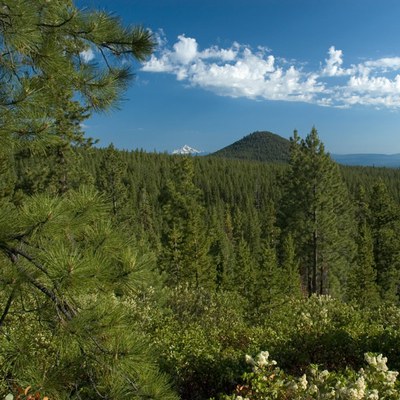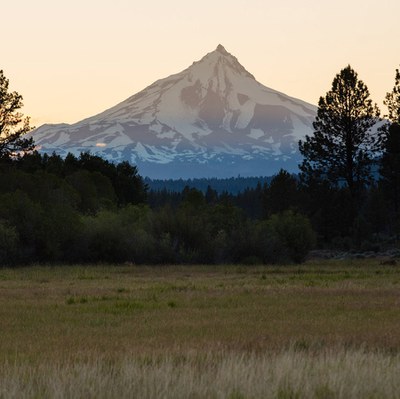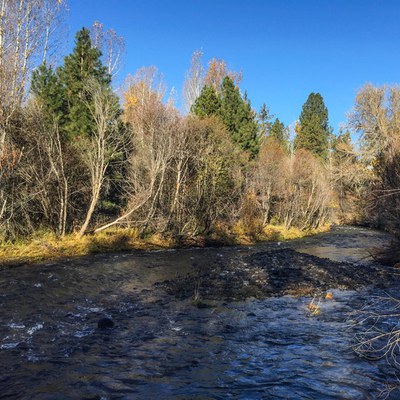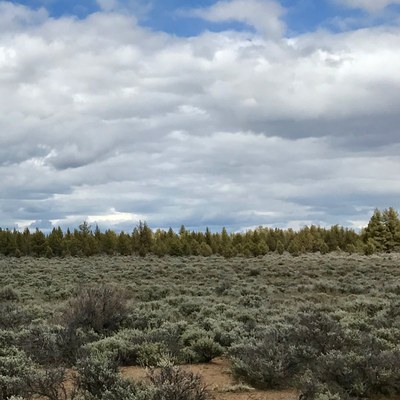Many people live in Central Oregon because of the immense beauty of its natural places. Our mountains, forests, lakes, streams, and sagebrush desert habitats are all being altered by climate change. These impacts have begun to affect natural systems across our region, and the impacts of climate change on animals, plants, and habitats are all interconnected. Learn more about what's happening now and what we can expect to happen in the future to our loved places.

We have already started to see an increase in large wildfires and the length of wildfire season in Central Oregon. This is a trend that will likely continue into the future. In the near term, some forests in the East Cascades region may expand into areas like grasslands due to a longer growing season and increased precipitation (likely rain). Unfortunately, more trees and undergrowth could also intensify wildfires in our area.
In addition, increased temperatures in Central Oregon may boost tree disease outbreaks and bark beetle invasions. Some models suggest that the range of bark-beetle-hosting ponderosa pine and Douglas fir trees will increase, creating opportunities for large-scale infestations. In the long-term, this will likely lead to rapid, widespread death of ponderosa pines.
Read more about this on our blog: Fire in Central Oregon.

Although it's incredibly difficult to predict precisely how climate change will impact precipitation, many models suggest that overall precipitation will increase in Oregon in the next hundred years or so. Due to rising temperatures, this precipitation will fall primarily as rain and will significantly reduce snowpack, particularly in the Cascades. In the transition to rain-dominant precipitation, rain-on-snow events will contribute to increased flooding and other streamflow alterations. By the 2080s, the entire Deschutes River region will likely be rain-dominant.
Read more about this on our blog: Winter Isn't Coming.

Since warmer air holds—and ultimately releases—more moisture than cooler air, increased rainfall is predicted in Central Oregon. In the Cascades, this will combine with warmer temperatures to create less snowfall, more rainfall, and more flooding.
In rivers, more rain and less snow will contribute to earlier peak streamflow, will cause lower low flows, will decrease annual streamflow, and may lead to other changes in timing. It will also lead to a reduced amount of mountain groundwater recharge.
Warmer temperatures and decreased streamflow will contribute to higher stream temperatures, reducing habitat quality for fish, frogs, and other wildlife.
Read more about this on our blog: Rain-on-Snow Events in Central Oregon.

It is likely that sagebrush desert habitats will be reduced by climate change, which will allow plants like juniper to expand. Invasive species like cheatgrass will also continue to spread throughout the area. The combination of juniper and cheatgrass will provide ample material for intense fires and may cause the sagebrush system to be changed entirely into grasslands.
In Central and Eastern Oregon, some of the wildlife expected to face population decline and loss of habitat include pronghorn, pgymy rabbit, western burrowing owl, mule deer, golden eagle, and greater sage grouse.
Learn more:
- What is climate change?
- What are the climate change impacts on the communities that I love?
- What is the Deschutes Land Trust doing to help reduce climate change's impact?
- How can I help reduce the impacts of climate change?


